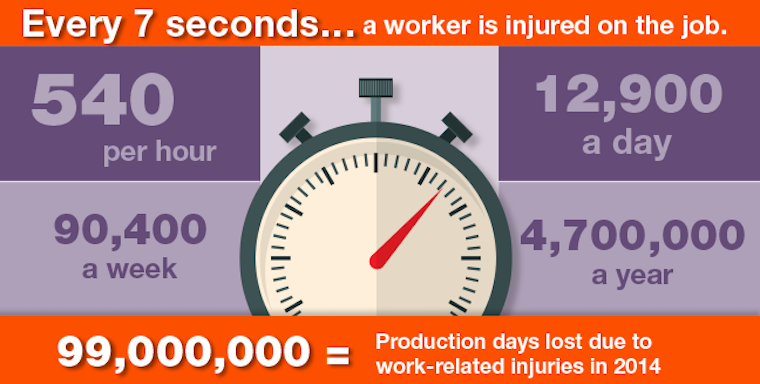Workplace injuries – even deaths – are not limited to the types of dangerous jobs we associate with high-risk activities like skyscraper construction. That’s why each year the National Safety Council, the U.S. Occupational Safety and Health Administration (OSHA) and other trade and governmental organizations use the month of June to observe National Safety Month. And this year, OSHA is using this week (June 12-18, 2017) to observe the first-ever Safe & Sound week, an event to raise awareness and understanding of the value of safety and health programs that include management leadership, worker participation, and a systematic approach to finding and fixing hazards in workplaces.
Safe + Sound Week
According to OSHA, the idea behind Safe + Sound Week is that successful safety and health programs can identify and manage workplace hazards before they cause injury or illness, hurting both the workers and a company’s bottom line. Examples of potential activities and tools to help you plan and promote your events are available here. After you’ve completed your events, you can download a certificate and web badge to recognize your organization and your workers.
OSHA no-cost “On-site Consultation Program”
Another program that OSHA encourages businesses of any size to use is the On-site Consultation Program.
Last year (2016), OSHA offered consultation services to approximately 28,000 businesses and non-profits nationwide, including about 24,000 that were visited for the first time. Most of these organizations were small – averaging about 48 employees. This is a federally funded program that connects private companies with their state government to support small businesses and ensure their workers are safe on the job. Participating employers have access to expert safety and health advice that can ultimately help them increase productivity and reduce losses due to injuries and workers compensation costs.
NOTE: Consultation services are separate from OSHA enforcement inspections. (See OSHA’s Non-Retaliation Policy.). The On-site Consultants Will Not
- Issue citations or propose penalties for violations of OSHA standards.
- Report possible violations to OSHA enforcement staff.
- Guarantee that your workplace will “pass” an OSHA inspection.
More OSHA resources for small businesses
- Benefits and Resources
- eTools, eMatrix, Expert Advisors and v-Tools
- Hazard Communication
- OSHA’s A to Z Index
- Q&A’s for Small Businesses
- Safety and Health Topics
- Small Business Handbook
- Small Business Publications
- Small Business Regulatory Enforcement Fairness Act of 1996 (SBREFA)
Books and reference material available from the National Safety Council
- Accident Prevention Manual
- Fundamentals of Industrial Hygiene
- Supervisors’ Safety Manual
(Entire safety library available from NSC Press)
istock


